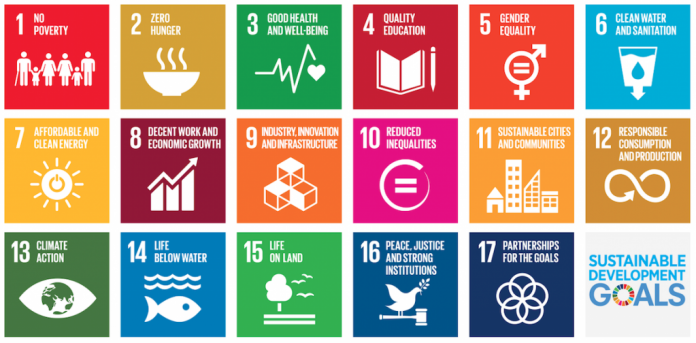By Guangzhe Chen*
Since 1990 an additional 2.1 billion people worldwide gained access to improved sanitation and, 91 percent of the global population now use improved drinking water sources. However, those who have access to Water and Sanitation Services–WSS–services often have to cope with poor service quality, including intermittent supplies. Hence, whereas the Millennium Development Goals–MDGs–predominantly focused on access and infrastructure delivery, the Sustainable Development Goals–SDGs–have ushered in a paradigm shift to focus on sustainability and service delivery–setting higher and broader expectations.
Globally, 4.5 billion and 2.5 billion people lack access to safely managed sanitation and drinking water services respectively. The need to advance the SDGs is significantly pronounced in Latin America where only 65 percent and 22 percent of the population enjoy access to safely managed water and sanitation respectively.
In addition to SDG 6 (the Water SDG), managing water is critical for the success of the majority of SDGs. However, increasing vulnerability to climate change; ever-increasing demographic pressures; and increased fragility, are but a few of the greatest, impending threats to their achievement. By 2030 global water demand is expected to exceed supply by 40 percent and inadequate sanitation further depletes already diminishing water resources. In some instances, growth rates could decline by as much as 6 percent of GDP by 2050 as a result of water-related losses.
These interdependent challenges exacerbate paramount pressures on limited financial resources. SDG targets 6.1 and 6.2 alone have been estimated to cost US$112 billion per year (ranging from US$74 billion to US$166 billion). Over 80 percent of countries report insufficient financing to meet SDG targets, despite average increases of 4.9 percent in national WASH budgets. Moreover, the maximum level of Official Development Finance to the water sector reached US$18 billion in 2014, suggesting that aid commitments cannot sufficiently cover investment needs.
Strong political leadership is needed
Attaining additional financial resources is inevitable. Therefore, strong political leadership to bring about sector-wide interventions that improve governance and build technical and administrative capacity at scale will be essential to enhance creditworthiness–a fundamental pre-condition to enable access to needed commercial financial sources. Creditworthiness hinges on the ability of utilities to maximise technical and financial efficiency gains. Historically, governments have subsidised WSS services in lieu of promoting cost-recovery tariffs to ensure affordability.
However, cost-recovery tariffs can alleviate pressures on public funds and allow for better targeted pro-poor policies in addition to funding critical public functions, such as planning, regulation, capacity building, and monitoring. Moreover, by supporting the right policies, institutional and regulatory frameworks, governments can incentivise service providers to improve operational and commercial efficiency, leading to improved service sustainability and enhanced credibility of service providers.
Accessing commercial finance requires a tailored, progressive, and strategic approach. The World Bank is adopting an approach that effectively uses credit enhancements–such as guarantees–and blending public and concessional funds with private finance to accommodate affordability constraints of commercial finance. To this effect, there are a host of ‘blended finance’ options that can leverage commercial finance to support water related infrastructure. Valuable public finance can be used in conjunction with concessional funds, and further supported by credit enhancements, to secure domestic commercial finance.
Results based finance via grants and subsidies can support access extension for instance, or technical assistance and capacity building to help structure potential transactions. Concessional finance can be blended with domestic commercial finance and financial engineering, through a multitude of structures that can support investors. Finally, credit enhancements in the form of guarantees or revenue intercepts that allow risk sharing, extend the tenor, or add security for potential investors.
Maximising finance for development by leveraging private financial resources
Recognising that governments cannot immediately adopt this paradigm shift to commercial financing, the World Bank has developed a phased approach to provide tailored and effective support to client countries. This approach aims to maximise finance for development by leveraging private financial resources, optimising efficient use of public resources while promoting good governance and securing environmental and social sustainability.
Where commercial financing is not cost-effective due to perceived risks or market failures, the World Bank support will focus on strengthening country and sector policies, institutions and regulation to address these market failures and develop an enabling environment for the private sector; where risks remain high and raise cost of commercial capital, options to lower financing cost through risk-sharing instruments will be explored; and where commercial financing is not cost-effective or viable despite sector reform and risk mitigation, public and concessional resources will be applied.
Experiences demonstrate viability of this approach to bring about the needed impact. Colombia’s experience proved successful in developing local credit markets. A second-tier lending institution (FINDETER) was established to provide commercial banks with lending capital to offer to municipal borrowers at discounted rates. By 2014 WSS investments represented an estimated 28 percent of FINDETER’s total disbursements.
Ultimately, securing a sustainable future for all requires a global commitment to maximise finance for development–an endeavour for which the World Bank is prepared to strive for along with its partners.








